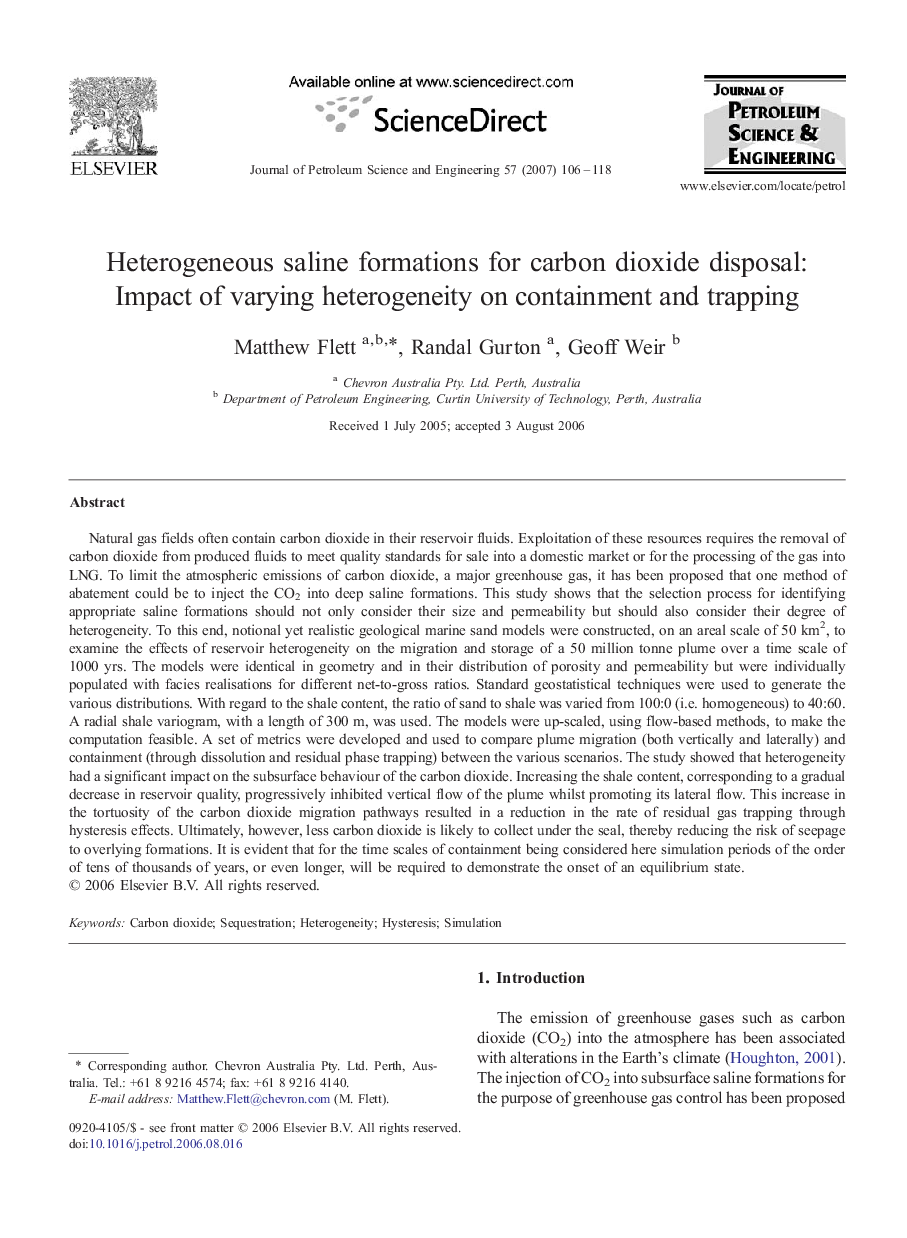| Article ID | Journal | Published Year | Pages | File Type |
|---|---|---|---|---|
| 1756526 | Journal of Petroleum Science and Engineering | 2007 | 13 Pages |
Natural gas fields often contain carbon dioxide in their reservoir fluids. Exploitation of these resources requires the removal of carbon dioxide from produced fluids to meet quality standards for sale into a domestic market or for the processing of the gas into LNG. To limit the atmospheric emissions of carbon dioxide, a major greenhouse gas, it has been proposed that one method of abatement could be to inject the CO2 into deep saline formations. This study shows that the selection process for identifying appropriate saline formations should not only consider their size and permeability but should also consider their degree of heterogeneity. To this end, notional yet realistic geological marine sand models were constructed, on an areal scale of 50 km2, to examine the effects of reservoir heterogeneity on the migration and storage of a 50 million tonne plume over a time scale of 1000 yrs. The models were identical in geometry and in their distribution of porosity and permeability but were individually populated with facies realisations for different net-to-gross ratios. Standard geostatistical techniques were used to generate the various distributions. With regard to the shale content, the ratio of sand to shale was varied from 100:0 (i.e. homogeneous) to 40:60. A radial shale variogram, with a length of 300 m, was used. The models were up-scaled, using flow-based methods, to make the computation feasible. A set of metrics were developed and used to compare plume migration (both vertically and laterally) and containment (through dissolution and residual phase trapping) between the various scenarios. The study showed that heterogeneity had a significant impact on the subsurface behaviour of the carbon dioxide. Increasing the shale content, corresponding to a gradual decrease in reservoir quality, progressively inhibited vertical flow of the plume whilst promoting its lateral flow. This increase in the tortuosity of the carbon dioxide migration pathways resulted in a reduction in the rate of residual gas trapping through hysteresis effects. Ultimately, however, less carbon dioxide is likely to collect under the seal, thereby reducing the risk of seepage to overlying formations. It is evident that for the time scales of containment being considered here simulation periods of the order of tens of thousands of years, or even longer, will be required to demonstrate the onset of an equilibrium state.
